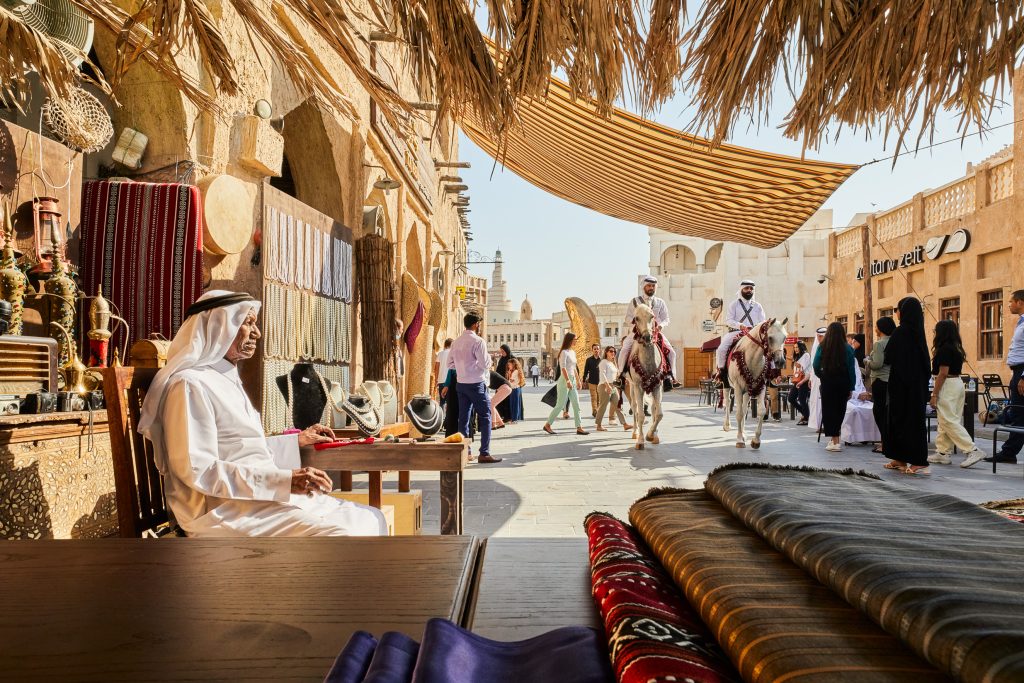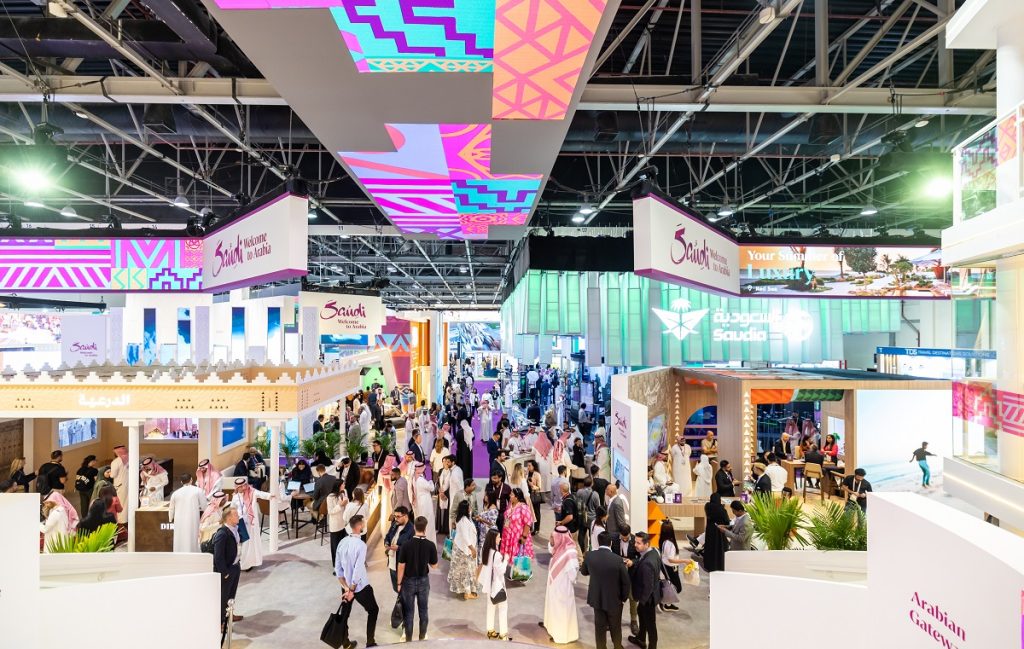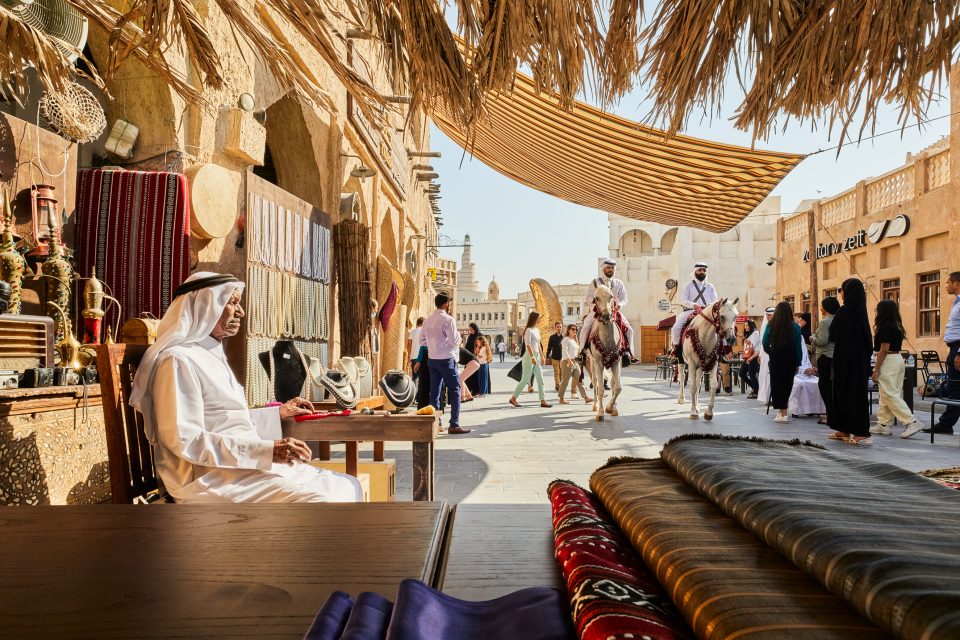The tourism industry is on track to becoming one of biggest generators of revenue for the Middle East, with expectations that it will bring in nearly $350 billion per year!

Over the next five years, tourism expenditure in the region is expected to be 50% higher than 2024, according to a new report by Tourism Economic compiled on behalf of Arabian Travel Market. Travel spending is also projected to exceed 2019 levels by 54% and have an annual growth rate of over 7% from 2025 to 2030.
If you’re a Travel Agent you may want to bring out the balloons and streamers, because the increase in tourism is predicted to come from a surge in the business and luxury market – two types of travellers still dedicated to utilising the services of a travel professional.
Unsurprisingly, sports tourism will also play its role in boosting the region’s industry thanks to the efforts of countries such as Qatar and Saudi Arabia in attracting major international sporting events including the Formula 1 Grand Prix, and first ever Olympic Esports Games.
“Bold national visions, game-changing developments, and enhanced connectivity are some of the key factors driving this momentum,” said Danielle Curtis, Arabian Travel Market’s Executive Director ME.
“Travellers drawn to the Middle East tend to spend more on travel overall, nearly 60% habitually spending on luxury experiences while travelling compared to under 40% among travellers who favour other destinations.”
Here’s a breakdown of some of the highlights for tourism to the Middle East over the next five years (according to the report):
Unprecedented growth in luxury and lifestyle

If people have money to spend, they want to spend it in the lushest place on the planet, the Middle East.
Luxury and lifestyle tourism will undergo unprecedented growth in the next five years, with the new generation of high-net-worth travellers driving the trend. This shouldn’t come as too much of a surprise given the investment the region places in its tourism product including the recent opening of opulent hotel The Set, increased private air offerings, and even Saudi Arabia’s ‘Dream of the Desert’ 5-star rail service.
According to the report, high-net-worth individuals are drawn to the region’s exceptional hospitality, curated experiences and premium cultural events.
Global spending on luxury leisure hospitality is predicted to reach US$390 billion by 2028, and the Middle East will get its fair share.
UK, China and India are top source markets
Inbound travel from outside the Middle East is set to grow by 13% annually up to 2030, and this will be driven by key markets such as the UK, India and China.
According to the report, India and UK are the region’s top two inbound international leisure source markets for, and industry leaders are doing the most to capture their attention. Last year, the UAE unveiled plans to cater to the ever-abundant Indian couples looking to tie-the-knot overseas, while Etihad upgraded its 20-year-old Mumbai service by deploying the jumbo A380.
China is also a critical market for the region, ranking third by value with leisure spend expected to increase by 130% by 2030. With this incredible growth, it’s no wonder Dubai is hosting the China Visitors Summit in August.
Furthermore, tourism nights by visitors from Asia Pacific and Africa, are expected to increase by over 100% between now and 2030.
Saudi and Egypt to dominate outbound travel
When it comes to locals booking trips overseas, Saudis and Egyptians will do the most travelling. According to the report, the two countries will dominate outbound travel for the region to long-haul destinations such as Thailand the UK. If you’re a Travel Agent, you might want to scrub up on your Thai and British travel knowledge.
Overall, outbound travel for the Middle East is predicted to surge by 9% per year by 2030.
The Middle East as a global business hub
As we mentioned earlier, business travel will play a big role in the Middle East’s growing tourism sector. Spending on Middle East business travel will grow 1.5 times faster than the global average through to 2030. While the region’s investments will play a big role, so too does it strategic location at the centre of Asia, Africa, and Europe.
Business travel will also play a vital role in developing the region’s reputation for hosting major events. The Middle East is expected to experience the second-fastest rate of business travel growth among all global regions, underscoring the increased potential for combining business and leisure travel, or ‘bleisure’.
Arabian Travel Market plays its part

Held annually in Dubai, Arabian Travel Market is one of the region’s biggest tourism events, attracting attendees from across the region and beyond.
Also known as ATM, the conference plays a vital role in shaping the future of global travel, and welcomed over 55,000 industry professionals from 166 countries, achieving year-on-year growth of 16%. The next edition will take place from 4-7 May 2026 – if you haven’t already, start planning your attendance.



